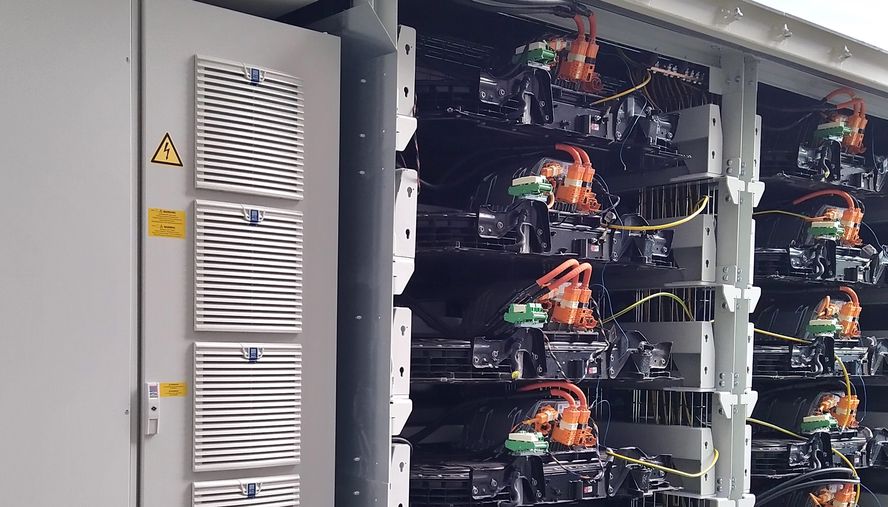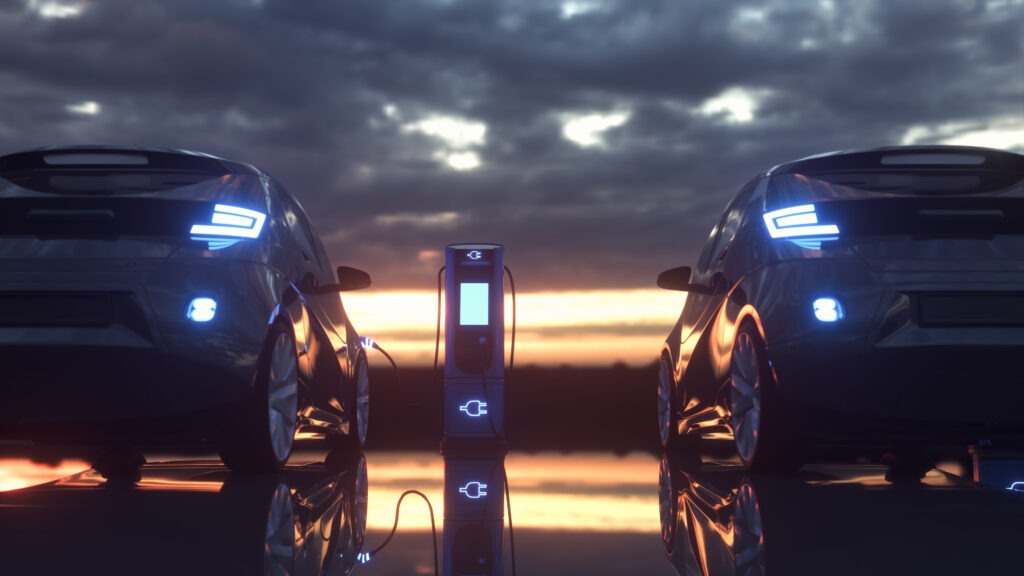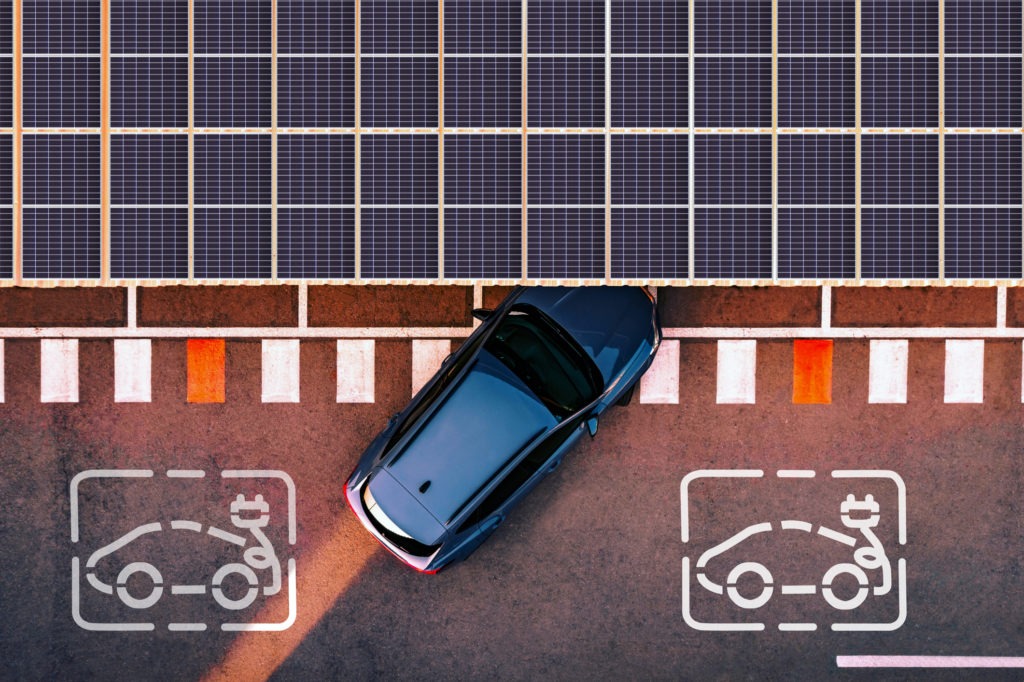Recycling retired electric-vehicle batteries releases additional value
28 September 2022

The residual value of spent electric-vehicle batteries is high, opening additional opportunities for the automotive industry, writes Autovista24 journalist Rebeka Shaid.
Batteries in electric vehicles (EVs) are expensive to produce as they are made of rare-earth elements, prices of which have gone through the roof this year. Recycling is crucial to extract and reuse these resources – notably lithium, nickel, and cobalt. But giving used EV batteries a second life before they enter a recycling facility unlocks additional value.
Battery performance starts decreasing when it has reached 3,000 charging cycles but even then, battery packs still hold up to 80% of their initial capacity and can be used for another 10 years or so. From wind farms to solar plants, used electric-car batteries have found their way into second-life applications for energy-storage services. Those in the industry expect these components to be reused in a variety of mobility solutions, including electrically-assisted bicycles, delivery scooters, and motorbikes.
Carmakers, automotive suppliers, and energy providers are working together to extend the lifecycle of batteries – efforts that can help expand renewable energy while also tackling challenges around electronic waste. Considering the high carbon footprint of batteries, repurposing prevents them from ending up in landfill. Battery disposal is costly, and with the automotive industry focusing on sustainability efforts, it is increasingly exploring battery circularity.
Opening source of supply
Manufacturers have identified business as well as investment opportunities to make the most of the capital a battery has to offer, especially as the residual value of retired EV batteries remains high even when these units are no longer suitable for automotive use. Spent batteries used in stationary energy applications increase grid flexibility and, according to a report by consulting firm McKinsey, second-life battery supply for stationary applications could exceed 200 gigawatt hours per year by the end of this decade.
‘The advantage of second-life batteries is that they are cheaper than new batteries and that they are safe and extensively tested batteries. In addition, they open a source of supply within Europe – new batteries on the scale required would otherwise have to be imported almost exclusively from East Asia, essentially China and South Korea,’ German energy provider EnBW, which is working with Audi to test the potential of spent batteries in stationary electricity-storage systems, told Autovista24.
Several projects are underway to give batteries a second life, and carmakers have been active in the field for years. The project between Audi and EnBW centres on stationary electricity-storage systems. The companies want to use a reference storage unit made from discarded electric-car batteries, which originate from Audi e-Tron vehicles, to test various application scenarios.
But challenges remain. EnBW told Autovista24 that the future availability of second-life batteries of the same type and similar age for joint operation in a stationary storage system could prove challenging. The company also cited changing legal frameworks as a potential issue.
‘With the upcoming battery regulation, second-life EV batteries will be defined in a legal framework for the first time. This may also change the rights and obligations when replacing vehicle batteries on the market,’ EnBW said.
Car manufacturers are still weighing their options whether to recycle or repurpose battery packs, which are expected to outlast the vehicles. Battery recycling is not projected to take off before 2030. But with analysts anticipating the global EV battery reuse and recycling market to grow by 54% annually over 2020-2027, carmakers are in the middle of assessing what works best.
Volkswagen (VW) Group is relying on new analysis software to determine whether a high-voltage battery can be reused in a vehicle or repurposed in a mobile or stationary energy reservoir. This can include charging stations, mobile-charging robots, driverless-transportation systems, forklifts, home storage and emergency standby-power systems.
Battery modules from VW brand Audi are also helping to electrify rickshaws in India, albeit on a small scale. The manufacturer has joined non-profit startup Nunam to bring three test vehicles to the road in 2023. Battery packs could prove particularly useful for vehicles with lower weight, range, and power needs.

The list of carmakers trialling the use of second-life batteries is long and includes Mercedes-Benz, BMW, and Nissan. In Spain, energy company Enel Group has launched a project with the aim of enhancing grid stability at a power plant in the Spanish town Melilla. It will use old and new Nissan battery packs to compare performance.
‘The reuse of batteries will enable a win-win approach, meeting the needs of stationary application end-users, like utilities, which could procure end-of-life batteries at a lower price, as well as the needs of car manufacturers, which could avoid end-of-life disposal management thus reducing the cost of vehicles for end users,’ Enel told Autovista24.
While the company said that regulation in Europe was evolving to facilitate the required standardisation to make the use of second-life batteries easier and cheaper, Enel cautioned that ‘we still do not know enough about the second-life technology market. To understand the key metrics of battery degradation, cost, and performance, more research and demo projects must be put in place.’
Nissan has been eager to develop its expertise. As the manufacturer of what was once described the world’s first affordable, mass-produced electric vehicle – the Leaf – Nissan said back in 2009 that it was anticipating second-life batteries to be in high demand by 2020 in its home market.
It initiated a business venture dedicated to reusing, reselling, refabricating, and recycling the components – well before EV sales took off. Nissan has been testing used batteries ever since and in many ways, including the provision of up to a week’s worth of remote power in a caravan for ‘off-grid adventures.’

Renault is also working on giving battery packs a second life. The French automotive brand is using retired batteries to build large-scale energy-storage systems. It is collaborating with industry partners to develop storage technology using repurposed batteries, with projects running in countries such as France and Germany. In the UK, its SmartHubs project aims to deliver cleaner and cheaper energy to a local grid, powering social housing and businesses.
‘The EV-market is very young, just a bit over 10 years old. The volumes of second-life batteries will grow significantly from 2025 when the first EV vehicles will go off the roads,’ Renault told Autovista24.
Renault launched the ‘Advanced Battery Storage’ project in 2018, which it describes as a major stationary energy storage system that will be rolled out across several sites in Europe, using EV batteries. Renault’s Mobilize brand has also teamed up with startup Green-Vision, which specialises in integrating second-life batteries into vehicles, including food trucks and pizza delivery scooters.
‘Anything is possible with second life batteries,’ said Mobilize. This is big claim to make, but it highlights that giving used battery packs a second chance, instead of immediately recycling them, could prove to be a viable and more sustainable solution for end-of-life batteries.



